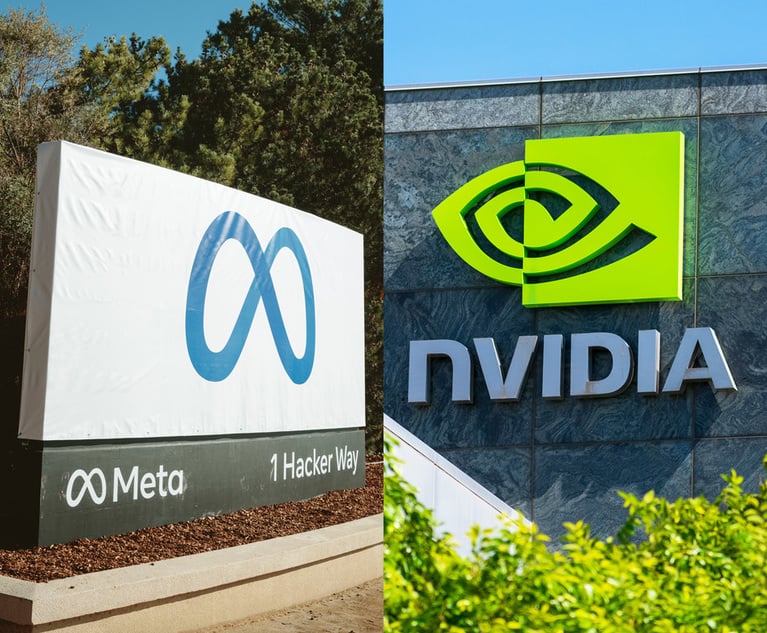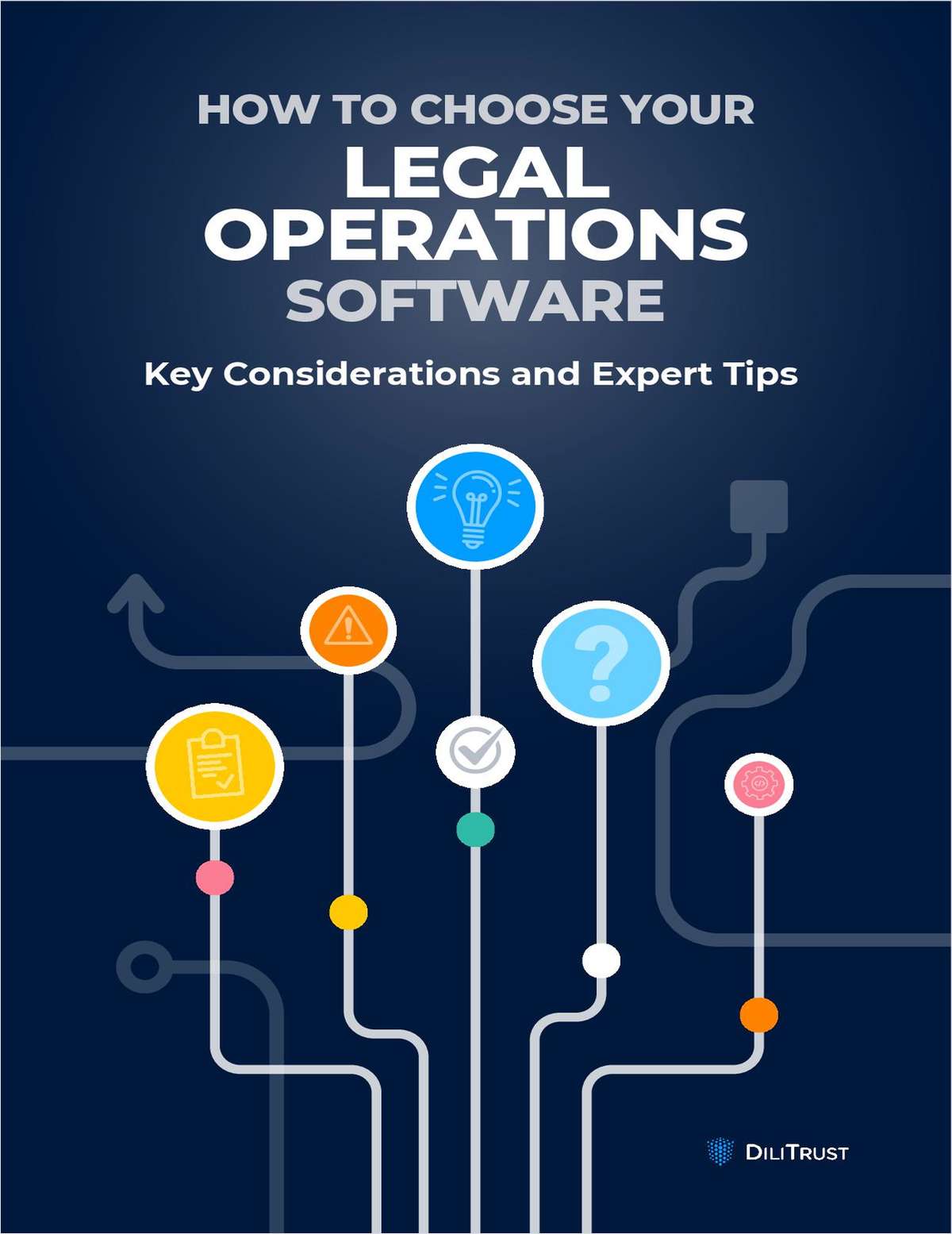 Image: Shutterstock
Image: ShutterstockLaw Firms Posted Impressive Growth in 2019, Citi Survey Finds
Small demand increases coupled with growth in billing rates led to a 5.3% climb in revenue among sampled firms.
February 11, 2020 at 05:30 AM
8 minute read
The original version of this story was published on The American Lawyer
Last year may not have matched 2018's performance, but 2019 was a year of solid growth for the legal industry, building on the strong results we reported for 2018. Revenue growth exceeded expense increases, widening margins. Rate increases were the strongest we have seen since 2008. Meanwhile, demand growth continued to accelerate as the year progressed. And while a longer collection cycle dampened revenue growth in 2019, strong inventory growth places the industry in a comfortable position to start 2020.
These results are based on a sample of 201 firms (76 Am Law 100 firms, 56 Second Hundred firms and 69 niche/boutique firms). Forty-five of these firms fit our definition of either international (less than 25% but more than 10% of lawyers based outside the United States) or global (at least 25% of lawyers based outside the United States). Citi Private Bank provides financial services to more than 700 U.S. and U.K. law firms and more than 50,000 individual lawyers. Each quarter, the Law Firm Group confidentially surveys firms in the Am Law 100 and the Second Hundred, along with smaller firms. In addition, we conduct a more detailed annual survey and semiannually produce the Law Firm Leaders Confidence Index. These reports, together with extensive discussions with law firm leaders, provide a comprehensive overview of current financial trends in the industry, as well as forward-looking insight.
Revenue growth of 5.3% was driven largely by lawyer billing rate growth of 4.5%, as demand increased by 1.1%. While 2019 demand growth was more modest than the 2.3% growth we reported for 2018, it's important to note that it accelerated from quarter to quarter throughout 2019. Meanwhile, rate increases were the strongest we have seen since 2008, marking two years in a row of strong rate growth. There were, however, two factors that dampened revenue growth in 2019: a slight drop in realization and a longer collection cycle. While realization dropped 0.5%—more than the 0.1% dip seen in 2018—it is consistent with the average annual drop in realization seen throughout the post-recession years. Certainly, firms continue to experience discounting pressure, but we have also heard anecdotally that some firms resisted taking deeper discounts offered by clients to ensure year-end payment. Those firms likely expected to already have strong 2019 revenue performance, and instead opted for payment in 2020. Clients taking longer to pay bills is one of the major factors behind the lengthening of the collection cycle—a key trend we have observed for some time, increasing by 1.8% in 2019. Another major factor driving this trend is the shift away from litigation, with its regular billing cycle, toward greater dependence on transactional work, especially when payment is made on deal closing. While the slowed collection cycle may have dampened year-end collections, inventory was up a very strong 7.1%, setting up the industry for a positive start to 2020 collections.
Expenses were up 4.8% for 2019, trailing revenue growth, and much better than the strong expense pressure we saw in the first half of the year. As the industry absorbed the impact of the mid-2018 associate salary increases, we saw lawyer compensation growth moderate from 7.3% for the first half to 5.3% for the full year—and that is with 1.9% growth in lawyer head count. Operating expense growth of 4.3% was also a better result than the 4.8% growth reported for the first half. That said, firms tell us that increased cybersecurity and technology expenses, together with increased spend on risk and compliance continue to put pressure on operating expenses. We have also heard anecdotally about some pre-payment of 2020 expenses as another factor driving expense growth.
Lawyer head count grew 1.9%, while equity partner headcount remained flat, continuing the longstanding trend of careful equity partner head count management. As a result, lawyer leverage was up by 2.5%. Even with an improved demand environment, we saw average lawyer productivity continue to trail 2018 results, down 0.5%. While the productivity dip moderated as 2019 progressed, as we noted previously, firms operated in an environment in which they paid more for lower productivity.
In a year where we saw continued consolidation, in the form of mergers, acquisitions and an active lateral market, it's worth noting the level of dispersion we saw behind the industry averages. The majority of firms (58%) reported demand growth, but this is less than the 61% reporting growth in 2018. With 42% of firms seeing a demand decline during 2019, it remains a challenging environment for many firms. We also saw some volatility in demand performance, defined as alternating periods of demand growth and decline. To measure volatility, we looked at the 154 firms reporting full-year results in 2017, 2018 and 2019. Approximately 39% of these firms saw demand increase in 2018 and decrease in 2019, or vice versa.
Looking at firms by revenue size, the results were more favorable for larger firms—the two Am Law 100 segments saw revenue growth outpace expense growth, while the reverse was true for Am Law Second Hundred and niche/boutique firms. Am Law 51-100 firms outperformed all other segments in demand growth (up 1.9%) and revenue growth (up 6%), despite a 0.7% lengthening of the collection cycle. Am Law 1-50 firms may have trailed Am Law 51-100 firms in demand growth, but we saw demand performance for these firms continue to improve throughout the year, up 1% for 2019—much better than the 0.7% decline we saw during the first quarter. Also, Am Law 1-50 rate increases outpaced other segments, up 5.1%, helping to drive the 5.7% growth in revenue (second only to the Am Law 51-100 firms), and in spite of the 2.2% lengthening of the collection cycle. Both segments matched in net income growth of 6.9%, with Am Law 1-50 firms reporting comparatively stronger profits per equity partner growth than Am Law 51-100 firms (6.4% vs. 5.8%). While the collection cycle lengthened for both Am Law 100 segments, they also had strong inventory growth (up 8.0% for Am Law 1-50 firms and 6.8% for Am Law 51-100 firms), setting them up well for the start of 2020.
Am Law Second Hundred and niche/boutique firms saw margin pressure as expense growth outpaced modest revenue growth. While demand increased by 1% for Am Law Second Hundred firms, both segments trailed Am Law 100 firms in revenue, rate and profit growth. Am Law Second Hundred firms ended 2019 with inventory growth of 3.2%, while niche/boutique firms matched Am Law 51-100 firms' inventory growth of 6.8%.
Looking at firms by geographic reach, the results were more favorable for firms with a greater international presence. Global firms led all segments in demand, revenue, net income and profits per equity partner growth. They also ended the year with 7.9% inventory growth. International firms saw the strongest rate increases, at 5.4%, and 1.5% demand growth, much stronger than the 0.9% decline reported during the first half. By year-end, revenue grew by 5.8%, net income by 6.6% and profits per equity partner by 5.8%. International firms also ended 2019 with 8.9% inventory growth, the strongest of all segments, setting them up for a solid start to 2020 collections.
National firms saw solid revenue growth (5.6%), driven by a combination of 1.5% demand growth, 3.8% rate increases and a shortened collection cycle—the only segment to achieve this. These firms ended the year with 4.4% growth in inventory.
Regional firms were the only segment to continue to see a demand decline. Revenue growth of 1.9% trailed all segments, trailing the 2.4% growth in expenses. Looking ahead, 7.8% growth in inventory means that these firms could see a strong start to 2020.
2019 may not have been as strong as 2018, but to achieve this level of growth over the results we reported for 2018 is impressive. In our meetings with clients, and in our 1H'20 Law Firm Leaders Confidence Index, we have seen that some law firm leaders are less optimistic about the first half of 2020. There are certainly a number of macro events to consider—the coronavirus threat, Brexit and the negotiations to follow, this year's U.S. election, unrest in Hong Kong, as well as ongoing trade wars, to name a few. That said, Citi does not anticipate a recession in 2020. While we believe it would be prudent for firms to plan for a downturn, if not a recession, at some point in time, we believe that 2020 will be another year of growth, albeit more modest than 2019. Demand growth continued to gain momentum in the fourth quarter. Rate growth has been strong. Year-end inventory levels are high, providing a strong basis for first-quarter collections. While we are likely to see continued dispersion driving further market consolidation, we expect average industry revenue growth of 5-6% in 2020, with profits per equity partner growth in the mid-single-digits.
Gretta Rusanow is head of advisory services within Citi Private Bank's Law Firm Group. Michael McKenney, senior client adviser, contributed to this article.
This content has been archived. It is available through our partners, LexisNexis® and Bloomberg Law.
To view this content, please continue to their sites.
Not a Lexis Subscriber?
Subscribe Now
Not a Bloomberg Law Subscriber?
Subscribe Now
NOT FOR REPRINT
© 2024 ALM Global, LLC, All Rights Reserved. Request academic re-use from www.copyright.com. All other uses, submit a request to [email protected]. For more information visit Asset & Logo Licensing.
You Might Like
View All

So You Want to Be a Tech Lawyer? Consider Product Counseling

Jones Day Client Seeks Indemnification for $7.2M Privacy Settlement, Plus Defense Costs
Trending Stories
- 1Judge Denies Sean Combs Third Bail Bid, Citing Community Safety
- 2Republican FTC Commissioner: 'The Time for Rulemaking by the Biden-Harris FTC Is Over'
- 3NY Appellate Panel Cites Student's Disciplinary History While Sending Negligence Claim Against School District to Trial
- 4A Meta DIG and Its Nvidia Implications
- 5Deception or Coercion? California Supreme Court Grants Review in Jailhouse Confession Case
Who Got The Work
Michael G. Bongiorno, Andrew Scott Dulberg and Elizabeth E. Driscoll from Wilmer Cutler Pickering Hale and Dorr have stepped in to represent Symbotic Inc., an A.I.-enabled technology platform that focuses on increasing supply chain efficiency, and other defendants in a pending shareholder derivative lawsuit. The case, filed Oct. 2 in Massachusetts District Court by the Brown Law Firm on behalf of Stephen Austen, accuses certain officers and directors of misleading investors in regard to Symbotic's potential for margin growth by failing to disclose that the company was not equipped to timely deploy its systems or manage expenses through project delays. The case, assigned to U.S. District Judge Nathaniel M. Gorton, is 1:24-cv-12522, Austen v. Cohen et al.
Who Got The Work
Edmund Polubinski and Marie Killmond of Davis Polk & Wardwell have entered appearances for data platform software development company MongoDB and other defendants in a pending shareholder derivative lawsuit. The action, filed Oct. 7 in New York Southern District Court by the Brown Law Firm, accuses the company's directors and/or officers of falsely expressing confidence in the company’s restructuring of its sales incentive plan and downplaying the severity of decreases in its upfront commitments. The case is 1:24-cv-07594, Roy v. Ittycheria et al.
Who Got The Work
Amy O. Bruchs and Kurt F. Ellison of Michael Best & Friedrich have entered appearances for Epic Systems Corp. in a pending employment discrimination lawsuit. The suit was filed Sept. 7 in Wisconsin Western District Court by Levine Eisberner LLC and Siri & Glimstad on behalf of a project manager who claims that he was wrongfully terminated after applying for a religious exemption to the defendant's COVID-19 vaccine mandate. The case, assigned to U.S. Magistrate Judge Anita Marie Boor, is 3:24-cv-00630, Secker, Nathan v. Epic Systems Corporation.
Who Got The Work
David X. Sullivan, Thomas J. Finn and Gregory A. Hall from McCarter & English have entered appearances for Sunrun Installation Services in a pending civil rights lawsuit. The complaint was filed Sept. 4 in Connecticut District Court by attorney Robert M. Berke on behalf of former employee George Edward Steins, who was arrested and charged with employing an unregistered home improvement salesperson. The complaint alleges that had Sunrun informed the Connecticut Department of Consumer Protection that the plaintiff's employment had ended in 2017 and that he no longer held Sunrun's home improvement contractor license, he would not have been hit with charges, which were dismissed in May 2024. The case, assigned to U.S. District Judge Jeffrey A. Meyer, is 3:24-cv-01423, Steins v. Sunrun, Inc. et al.
Who Got The Work
Greenberg Traurig shareholder Joshua L. Raskin has entered an appearance for boohoo.com UK Ltd. in a pending patent infringement lawsuit. The suit, filed Sept. 3 in Texas Eastern District Court by Rozier Hardt McDonough on behalf of Alto Dynamics, asserts five patents related to an online shopping platform. The case, assigned to U.S. District Judge Rodney Gilstrap, is 2:24-cv-00719, Alto Dynamics, LLC v. boohoo.com UK Limited.
Featured Firms
Law Offices of Gary Martin Hays & Associates, P.C.
(470) 294-1674
Law Offices of Mark E. Salomone
(857) 444-6468
Smith & Hassler
(713) 739-1250









